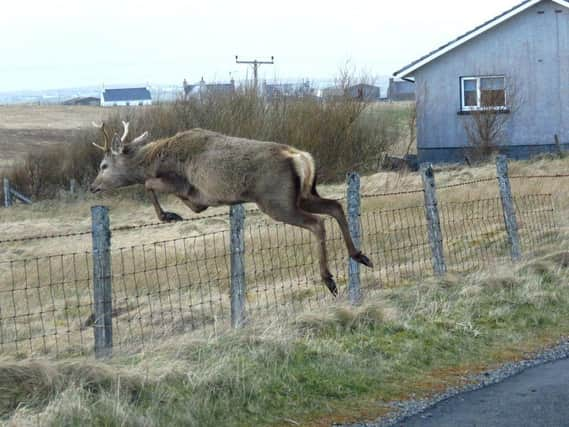Deer culls to increase as numbers double


This has led to sightings of deer becoming much more common in crofting villages, damage to gardens and fencing and an increasing number of road accidents including at least one with very serious consequences.
Now a helicopter study undertaken by NatureScot (formerly SNH) has found 8315 deer on Lewis and Harris. This compares with the 3895 figure quoted on the islands’ Deer Management Group web-site when it last reported numbers in 2019.
Advertisement
Hide AdAdvertisement
Hide AdIn response to Gazette inquiries, NatureScot said this week: “Our staff have been working with the Lewis and Harris Deer Management Group on their deer management plan. As part of that plan, individual estates have been carrying out ongoing management of deer, meeting cull targets of both hinds and stags.
“The plan and associated population model was based on previous counts done by foot. A recent helicopter count of the entire area confirmed that the deer population is higher than previously thought. NatureScot staff will be working with the DMG to advise on new cull targets to bring the deer population down to more sustainable levels”.
Asked about numbers identified by the helicopter count, Nature Scot said: “The latest deer count for the whole island in September 2022 was 8315 deer - an average 4 deer/km2, although the density varies across the area. That breaks down as 2755 stags, 4351 hinds and 1209 calves”.
NatureScot’s role in enforcing deer management was highlighted this week when they intervened at Loch Choire Estate in Sutherland to carry out a cull when the landowner failed to do so.
Advertisement
Hide AdAdvertisement
Hide AdNatureScot said they took action because the deer population was “having a significant impact on peatlands, woodlands and other habitats in the area, a large proportion of which is covered by protected area designations”.
Asked whether this set a precedent for action elsewhere, including the islands, NatureScot said: “The situation is different in Lewis and Harris where we continue to work closely and constructively with the local Deer Management Group on sustainable deer management in the islands.
“The Code of Practice on Deer Management sets out land managers’ responsibilities, NatureScot’s role and the circumstances under which we can intervene.
"While we always favour a voluntary and collaborative approach to deer management, NatureScot will not hesitate to make use of the full range of powers available to us when necessary, to secure vital benefits for nature and climate”.
Just this week Nature Scot announced they were to use ntervention powers to carry out a cull of red deer on Loch Choire Estate in East Sutherland.